In November 1976, Kenneth Brooten and Robert Groden traveled to Aurora, Colorado, to interview Billy Lovelady on behalf of the HSCA, to try to resolve once and for all, the dilemma of the “Man in the Doorway” of the Altgens6 photogaph. The interview was recorded on two tapes, one of which recently surfaced on youtube, and was transcribed by our team:

During the time he spent with Lovelady, Groden took these photos which eventually ended up as HSCA addenda that remained classified until 1992. Why?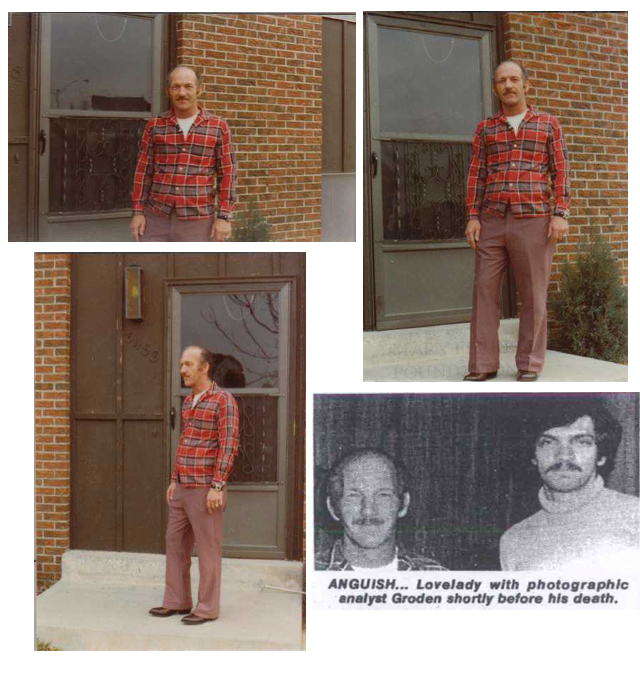
This next image, which had also been stashed away by the HSCA, is a frame from the John Martin Film. It is the actual photograph the Brooten-Groden team showed Lovelady. They showed him this cropped and underexposed frame from the Martin Film, which shows an individual in a plaid shirt with what appears to be a several day growth of “beard”. There are many problems with this image.

When Groden himself re-published the Martin film, he published the film with its normal level of exposure:
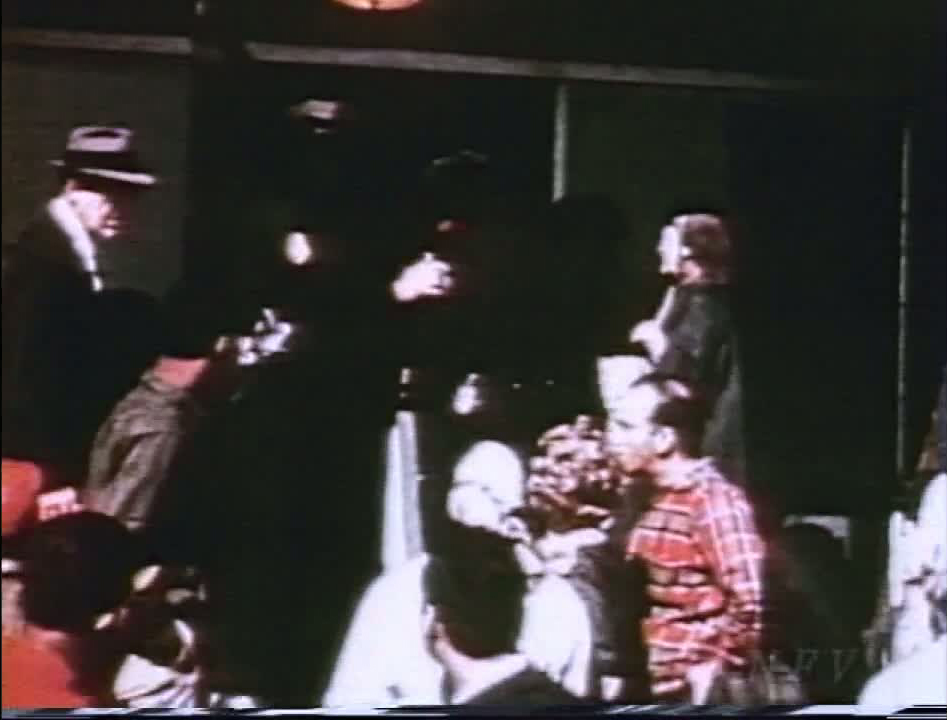
All of sudden, what appeared to be a “growth of beard”, was shown in reality to be an individual who had gone at the most, a day or so without shaving. But this goes even deeper. The Brooten-Groden team never actually asked Lovelady if this was him! They were only worried about the plaid shirt and the growth of beard mentioned above. On the back of this photograph, the Brooten-Groden team concocted this incredible statement, which recently a handwriting expert has concluded is NOT Lovelady’s signature, and has been forged:
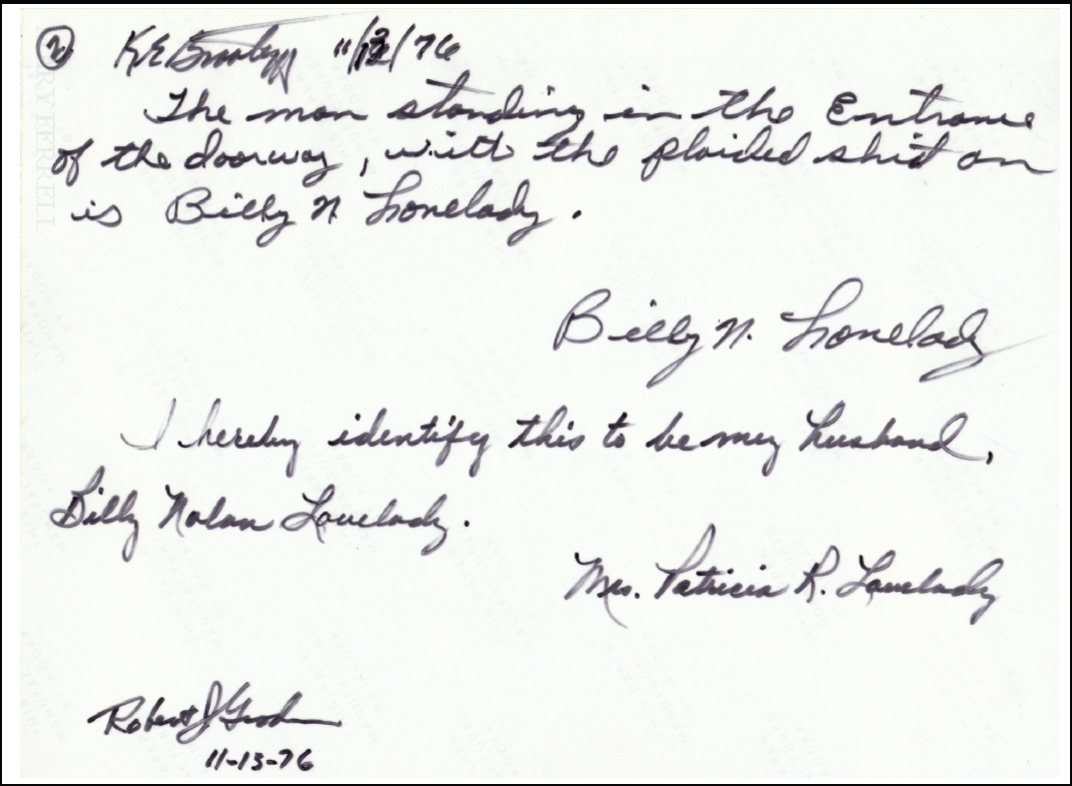


“Clearly, the two signature exemplars look little alike. One is bigger than the other. One uses a middle name; the other does not. In addition, there are numerous variances in letter formations, accompanied by major differences in at least seven separate graphology areas. Furthermore other than diacritical heights, upper zone widths and capitals widths, there are no modes (measurements) alike (however, I did not anticipate that the diacriticals, upper zone and capitals would fall within the same mode; this gives me a bit of pause). Kindly remember that such measurements are mostly subconsciously driven and automatic.”
“Some flagrant stroke or letter formation differences are briefly listed here: Exemplar #1: Angular upper zone formations. Exemplar #2: Upper zone formations are rounded. Exemplar #1: The Capital B in “Billy” is embellished; Exemplar #2 is not. Exemplar #1: Final signature stroke varies completely from Exemplar #2. Exemplar #2: Middle initial “n” much smaller than rest of signature; Exemplar #1 is not. Exemplar #2 has a broader “d” loop in Lovelady than #1. Exemplar #2 has decided directional pressure, “y” in Lovelady. #1 does not. Exemplar #2 has decided varying heights of the two l’s in “Billy”, while #1 does not; this is – however – not conclusive. More handwriting samples desired. Exemplar #2 has broader “e” loop than Exemplar #1. However, this particular trait is not fixed. Exemplar #1 has a left-leaning final stroke, “L” in Lovelady; #2 does not. (Evidence of slow writing.)* Exemplar #1 “stabs” his ovals; #2 uses garlands. Exemplar #2 has a “fish hook” on his Capital L, Lovelady. It is absent in #1. (emphasis ours) Exemplar #1 uses retracing strokes on Billy (indicating much tension); #2 does not. Exemplar #2 has eliminated the final “y” in Lovelady; in #1, it is evident.”
Important Postscript: The handwritten note dated 11/13/76, which begins, “The man standing in the entrance…” contains a lie. In other words, the writer is lying when he identifies the man as “Billy N. Lovelady.”
So what is so mysterious about this image? Why the finagling? 
Perhaps because the individual in question is clearly and unquestionably wearing a shirt with a left breast pocket and buttoned flap. There is just no way to hide it – unless you manipulate the photograph to darken the image and simulate underexposure! When we compare with Lovelady’s “checkered” shirt, we can see the difference is obvious! And this next image collage is from Groden’s own book “Killing of a President”, page 187.
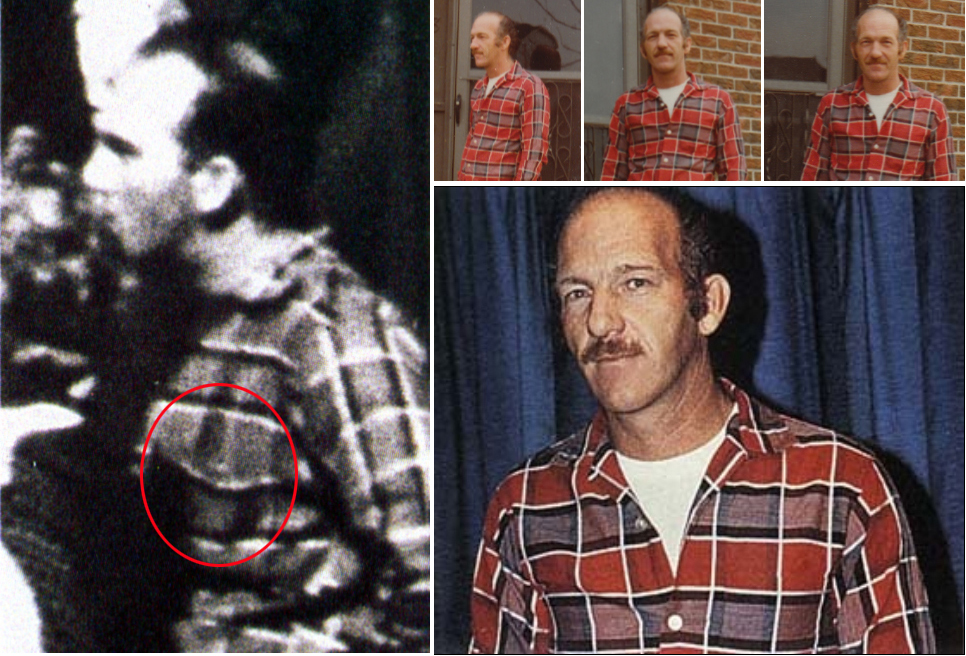
But is this individual really Billy Lovelady?? These next two overlay collages show it is NOT Lovelady.
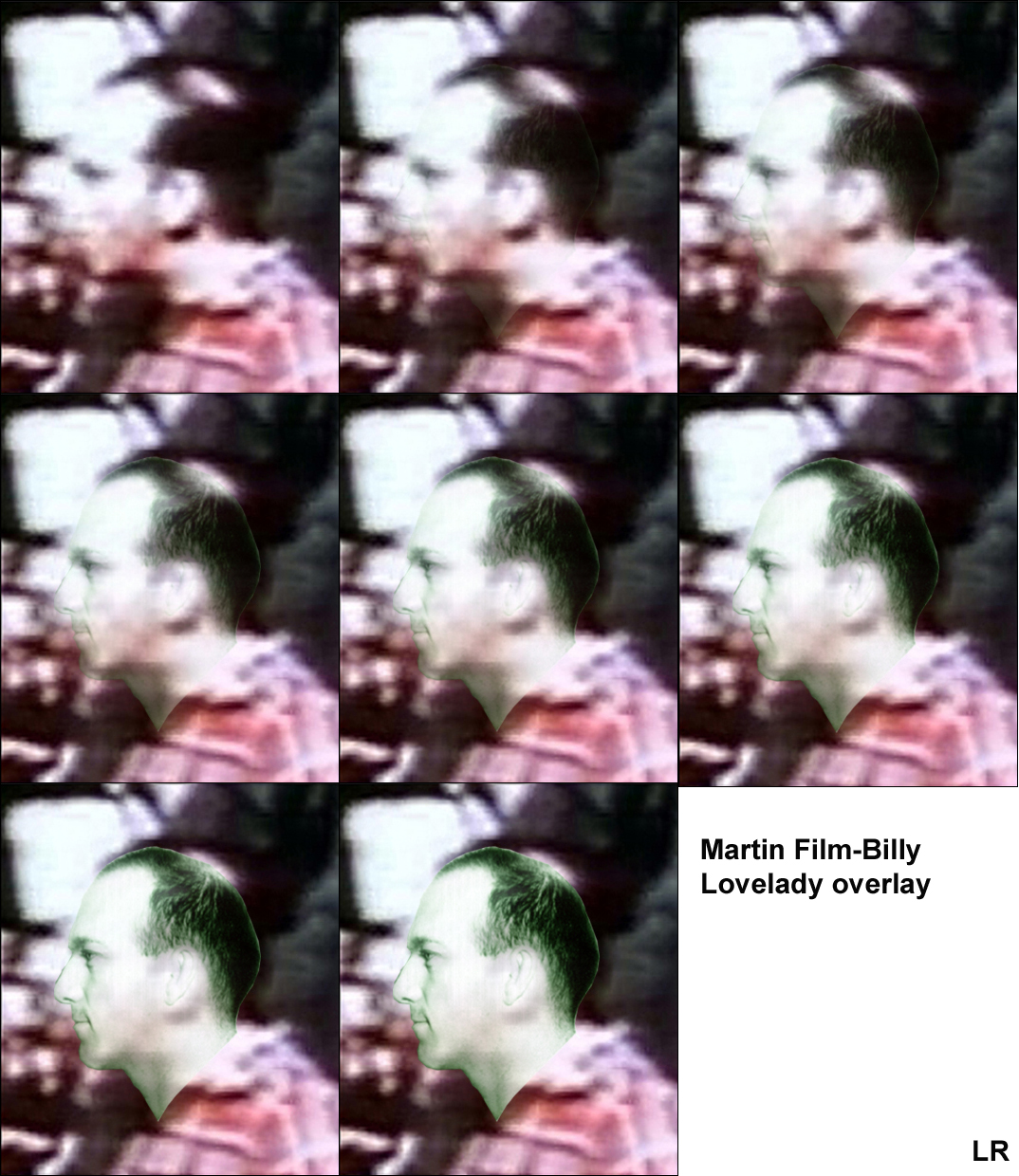
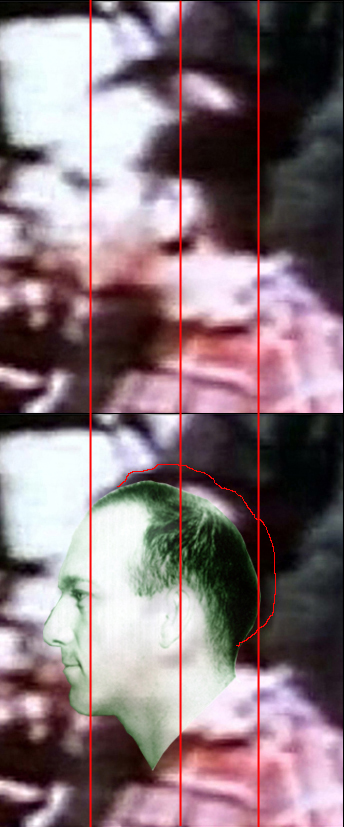
There are many anatomical differences between Lovelady and “Gorilla” man, most importantly a severely recessed chin, which Lovelady DID NOT have. The hairlines are different, the overall size of the head is different, even the bald spot, which is more pronounced on Gorilla man, when compared with the profile photo of Lovelady which was taken THREE months later! In the FBI photo shoot of 2/29/64, Billy had much less of a bald spot than on November 22, 1963. Huh? Obviously, Billy went into the wrong business when he moved to Denver. He should have marketed his hair re-growth formula and made a fortune!
In the same interview, which you can listen to above, Lovelady admitted he and Bill Shelley never went into the TSBD via the front entrance, which offers further proof that the man in the Martin film CANNOT be Lovelady:
BNL: Bill Shelley ah, he and myself, actually the girl told us about the event, we start running towards those railroad track we took off and ah, towards those railroad tracks. And then ah, Bill Shelley and myself, ah, we got to about the railroad tracks, wondering what we were doing out there, (30:50) and came in the back entrance of the building. Went back in the building.
KB: Right. Now, we move on to immediately after you heard the shots and went back in the building. What did you, what did you see inside the building?
BNL: All the other employees had gotten back into the building by that time we stood around and wondered whether we should go back to work or find out what happened, whether they thought we would have to go back to work…..
And that is exactly what Bill Shelley said under oath during his Warren Commission testimony:

We are left with the following contradiction – how could the Brooten/Groden team reconcile the fact that Billy stated he re-entered the TSBD via the back entrance and remained there until role call, yet they showed him a photo of an individual at the main entrance of the building 10 minutes after the assassination! Billy’s own words eliminated the possibility that this could have been him!
And when Lovelady was asked by Brooten if Lee Oswald was in the doorway on November 22, 1963 at 12:30PM, this is how he answered:
KB: Was Lee Oswald on those steps?
BNL: No – (unintelligible, maybe “Frazier”)
Brooten: Would it have been possible, from where you were, sitting – from where
you was, that he could have been there? (25:50)
BNL: Could have (25:51)…he was (unintelligible **standing?) (25:55)
…..and Brooten’s reaction to this incredible statement was to immediately change the subject!!:
KB: Right. – Now we move on to the second category of questions which is the events at the time of the assassination.
KB: How many shots do you recall?
And finally, in 1977, Brooten wrote Harold Weisberg a letter which included this passage:

We will let the reader draw his/her own conclusion.
